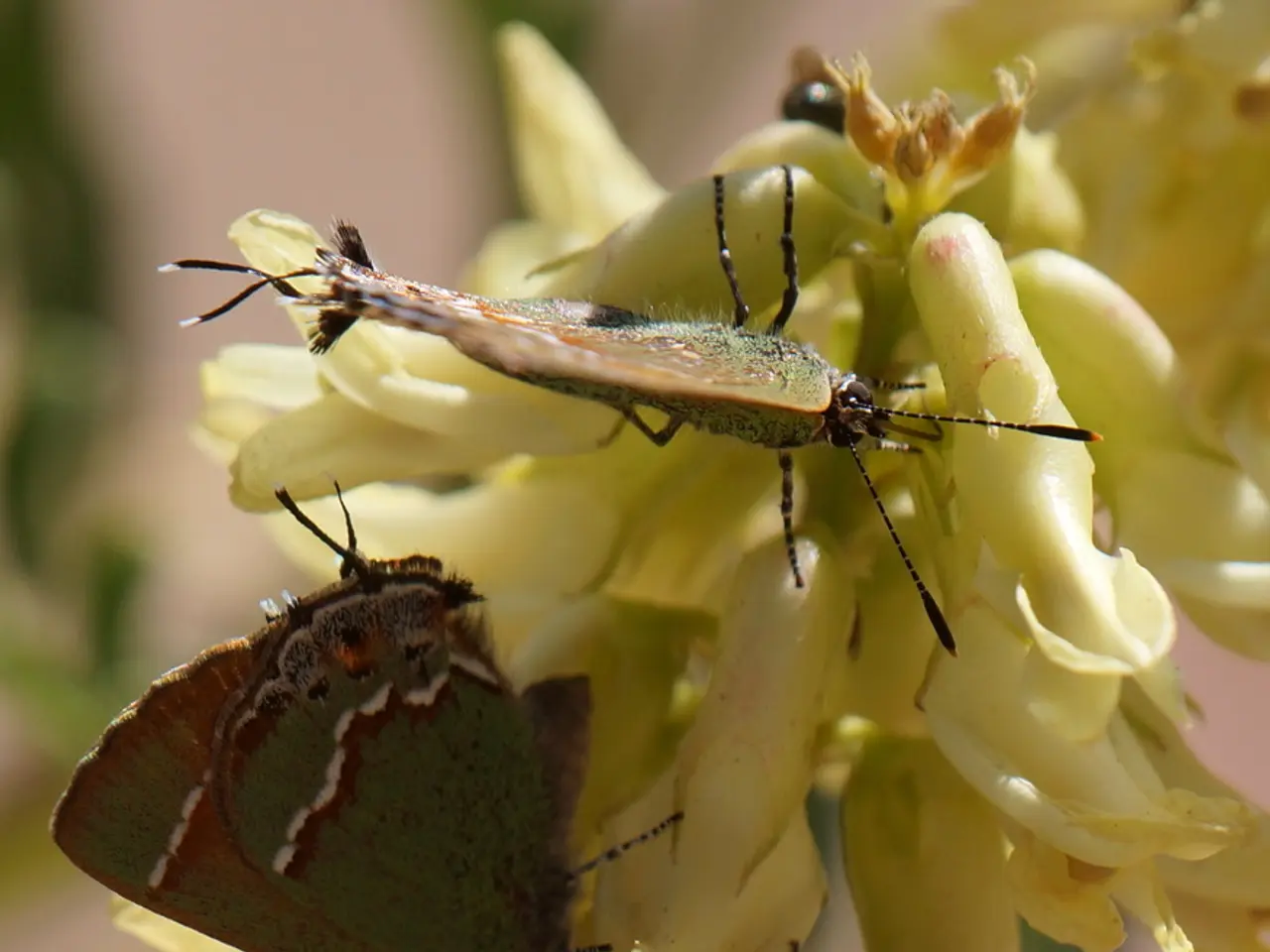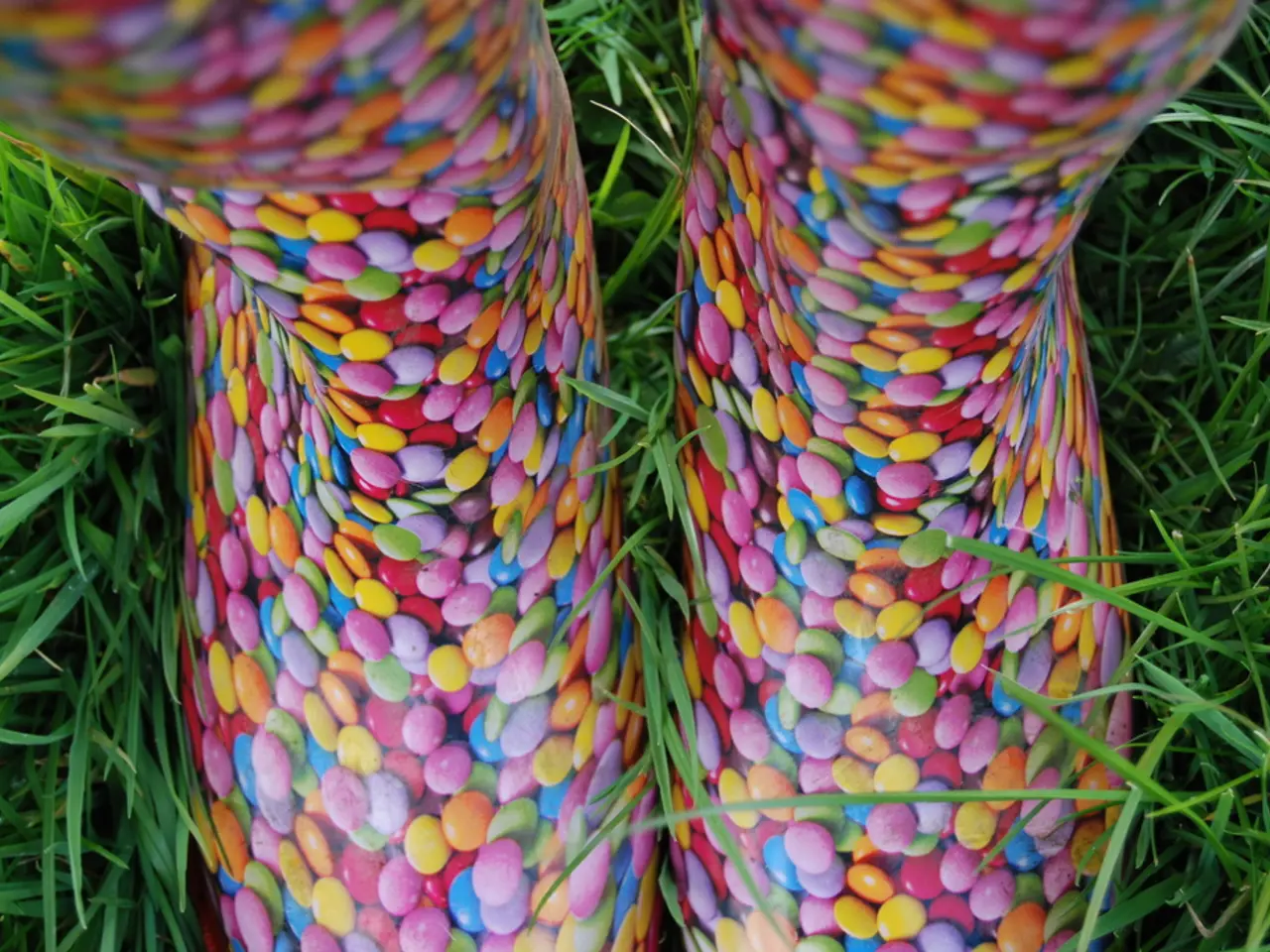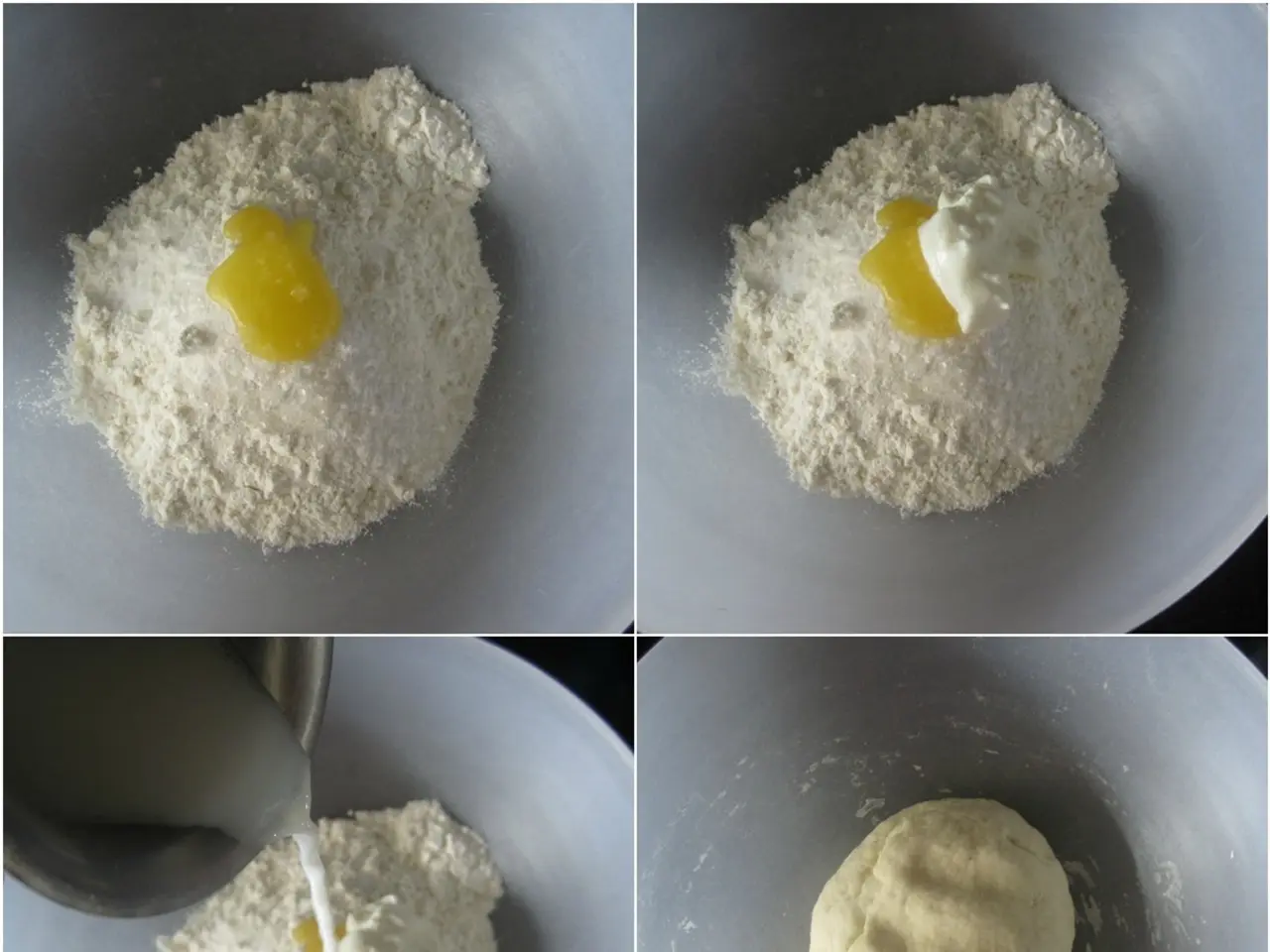Variety of Flora Attracting Diverse Butterfly Species to Gardens
In the enchanting world of nature, few sights can rival the beauty and grace of butterflies fluttering through a garden. To create a haven for these delicate creatures, consider planting a diverse array of flowers that cater to their needs throughout their life cycle.
Butterflies, particularly, are drawn to two types of plants: nectar flowers for adult butterflies and host plants for their caterpillars. Key plants that attract a wide variety of butterflies are:
- Mexican sunflower (Tithonia rotundifolia): With its bright orange blooms, this favourite nectar flower attracts many butterfly species [1][2].
- Red pentas: Another popular nectar plant that draws butterflies effectively [1].
- Orange zest cestrum: Tubular flowers loved by both butterflies and hummingbirds [1].
- Native wildflowers such as Joe-Pye weed, coneflowers, goldenrod, asters, and anise hyssop: These native plants offer plentiful nectar and attract many butterflies [2].
- Verbena: Known to spread quickly but loved by butterflies and bees [2].
- Parsley and bronze fennel: Important host plants for swallowtail butterflies, where caterpillars lay eggs and feed [2].
- Purple false foxglove (Agalinis purpurea): Host plant for Buckeye butterflies, blooming pink tubular flowers in fall [3].
- Woody goldenrod (Chrysoma pauciflosculosa): A good nectar and habitat plant for butterflies in well-drained soils [3].
To ensure a continuous flow of butterflies, it's essential to consider the unique requirements of each plant and the local growing conditions. For instance, Monarchs are attracted to milkweed, goldenrod, and asters [4]. The Eastern tiger swallowtail is drawn to the fragrant blooms of sweetbay magnolia, which serves as both a host and nectar plant for them [5]. Painted Ladies find solace in thistle, verbena, and daisies [6].
Red Admirals are attracted to honeysuckle, clover, and milkweed [7]. Zinnias offer a generous nectar supply and easy landing for butterflies [8]. Swallowtails are drawn to zinnias, coneflowers, and purple coneflower [9]. Cabbage Whites are attracted to mustard, thistle, and clover [10]. Mistletoe is used exclusively by the Great purple hairstreak for laying eggs and as a food source for their larvae [11]. The spicebush swallowtail lays eggs on sassafras leaves, which also serve as a food source for their larvae [12]. Black Swallowtails are attracted to dill, fennel, and parsley [13]. Lavender attracts cabbage white butterflies due to its sweet scent and ample nectar [14].
To maximise the attractiveness of your garden to butterflies, avoid invasive plants like some butterfly bushes and non-native ornamental grasses that can harm native ecosystems [2]. However, sterile butterfly bush varieties can be good alternatives.
By carefully selecting nectar plants, host plants, and blooming varieties, you'll support butterflies at all life stages, creating a vibrant, fluttering oasis in your garden.
[1] https://www.butterfly-garden.com/butterfly-plants/ [2] https://www.nwf.org/Garden-for-Wildlife/Plant-Native/Plant-List/Butterfly-Plants [3] https://www.butterflygarden.net/butterfly-plants/host-plants/ [4] https://www.butterfliesandmoths.org/species/Danaus-plexippus [5] https://www.butterfliesandmoths.org/species/Papilio-glaucus [6] https://www.butterfliesandmoths.org/species/Vanessa-pallida [7] https://www.butterfliesandmoths.org/species/Vanessa-atlanta [8] https://www.butterfly-garden.com/butterfly-plants/zinnia/ [9] https://www.butterfliesandmoths.org/species/Papilio-polyxenes [10] https://www.butterfliesandmoths.org/species/Pieris-brassicae [11] https://www.butterfliesandmoths.org/species/Hesperia-euryale [12] https://www.butterfliesandmoths.org/species/Papilio-cresphontes [13] https://www.butterfliesandmoths.org/species/Papilio-polyxenes [14] https://www.butterfliesandmoths.org/species/Pieris-rapae
- Incorporate Mexican sunflowers, red pentas, orange zest cestrum, native wildflowers, verbena, parsley, bronze fennel, purple false foxglove, and woody goldenrod to create a vibrant garden that attracts a variety of pollinators, particularly butterflies.
- By planting host plants like parsley, bronze fennel, and sassafras, you offer essential habitats for butterfly caterpillars to lay eggs and feed, supporting the entire lifecycle of these creatures.
- To ensure a continuous flow of butterflies, consider the unique needs of each plant, such as the preference of Monarchs for milkweed, goldenrod, and asters.
- DIY enthusiasts can explore home-and-garden resources to learn about planting a butterfly garden, enhancing their education-and-self-development and contributing to a sustainable lifestyle.
- Butterflies are not just a delight in the garden but also in the fashion-and-beauty world; their intricate patterns and vivid colors have played a significant role in the design of clothing, accessories, and makeup.
- In the food-and-drink industry, honey from butterfly-friendly gardens has gained popularity, showcasing the connection between these Pollinators and our daily sustenance.
- As butterflies flutter around in your garden, enjoy the entertainment value they bring, watching as they engage in activities such as sipping nectar, laying eggs, and transforming into beautiful adults.
- The joy of observing butterflies in your garden is not just a hobby but a lifestyle choice that embraces the beauty and harmony of nature, fostering a deeper connection to the environment and creating a tranquil retreat for both you and your pollinators.




